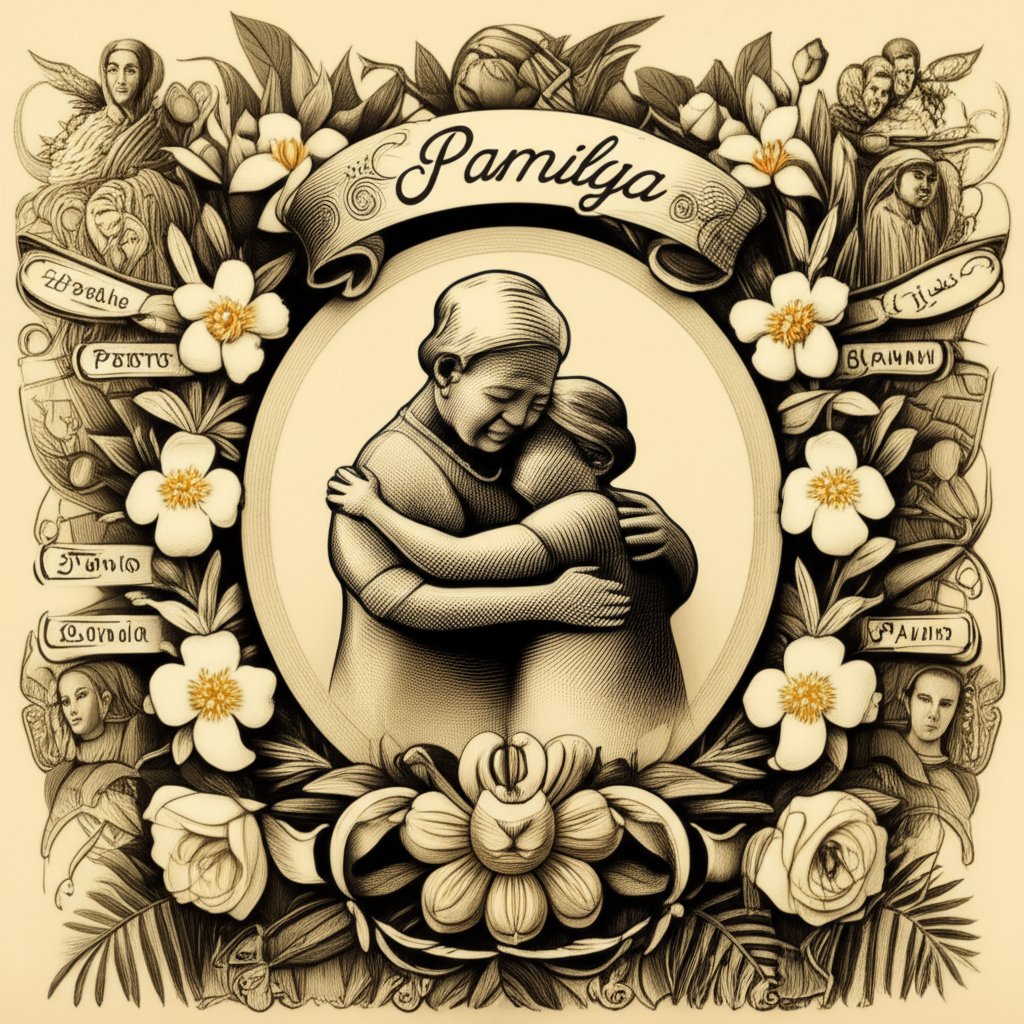Choosing a name for your baby girl is a momentous occasion, steeped in cultural significance and personal meaning. If you’re drawn to the vibrant heritage of the Philippines, exploring Filipino baby girl names offers a treasure trove of beautiful options. With influences ranging from indigenous languages like Tagalog to Spanish and even Greek, finding the perfect name can feel both exciting and overwhelming.
At a glance:
- Discover the rich cultural influences behind Filipino girl names.
- Explore traditional Tagalog names, Spanish-influenced options, and unique modern choices.
- Understand the importance of nicknames and naming traditions in Filipino culture.
- Learn how to combine parental names for a unique baby girl name.
- Gain inspiration from specific name examples, their meanings, and origins.
- Navigate common questions about Filipino naming conventions.
A Tapestry of Influences: Untangling Filipino Naming Traditions
Filipino naming culture is a fascinating blend, reflecting the archipelago’s diverse history. Unlike some cultures with strictly defined naming conventions, the Philippines embraces a melting pot of influences. Ancient Tagalog names stand alongside Spanish-derived monikers and even names with Greek or biblical origins. This creates a rich palette for parents seeking a meaningful and beautiful name. As you explore these names, remember that, like the diverse Native American cultures detailed in this comprehensive guide, each influence carries its own unique story and symbolism. Discover Cherokee baby names
Tagalog Roots: Ancient and Honorable
Many Filipinos are rediscovering the beauty of their ancient Tagalog roots. These names often carry meanings tied to virtues, nature, or positive attributes. While some might consider them old-fashioned, they possess a timeless elegance.
- Adhika: Meaning “honorable,” a strong and virtuous choice.
- Bulawan: Translating to “gold” or “golden skin,” perfect for a radiant baby.
- Dalisay: A classic Filipino name meaning “pure.” It’s a testament to enduring traditions.
- Himig: A unique name signifying “tune,” ideal for a musically inclined family or a baby with a melodic cry.
The Spanish Legacy: A Touch of Romance
Over 300 years of Spanish colonization left an indelible mark on Filipino culture, including naming conventions. Many popular Filipino girl names are Spanish in origin, often adapted from Christian saints or biblical figures.
- Bernila: Derived from the German Bernihilde, meaning “blessed.”
- Carmelita: A Spanish name meaning “garden,” specifically referencing the Garden of Eden, making it a beautiful biblical option.
- Christina: Meaning “follower of Christ,” a classic and popular choice.
- Dolores: One of many names associated with the Virgin Mary, often shortened to endearing nicknames like Lola or Lolita.
Beyond Tagalog And Spanish: Other Cultural Contributions
While Tagalog and Spanish influences dominate, other cultures have also contributed to the diverse landscape of Filipino baby girl names, including Greek and Biblical references.
- Evangeline: A Greek name meaning “bringer of good news,” full of optimism and hope.
- Liezel: This traditional Filipino girls’ name might seem German or French at first glance, but it’s actually the Tagalog form of Elizabeth, a biblical name that is found in many cultures and countries
Navigating Filipino Naming Customs: Nicknames and Parental Blends

Beyond the origin of the name itself, understanding Filipino naming customs can further enrich your decision. Two unique traditions stand out: the prevalence of nicknames and the blending of parental names.
The Nickname Culture: More Than Just a Shortening
In the Philippines, nicknames aren’t just shortened versions of official names; they’re often used more frequently than the given name itself. This offers flexibility and allows for a more personal connection. A long formal name can be paired with a variety of shorter, more casual nicknames.
Example: If you choose “Consolación,” your daughter could be called Connie, Cons, Sol, or Chona.
The Parental Blend: Creating a Unique Identity
One particularly charming Filipino tradition is the practice of combining the parents’ given names to create a unique name for their child. This is a creative way to honor both parents and forge a distinct identity.
Example: If the father’s name is Joseph and the mother’s name is Maria, they might name their daughter Jomari.
Important Consideration: While creative, ensure the blended name is pronounceable and aesthetically pleasing.
Filipino Girl Names: A Curated List
To inspire your search, here’s a curated list of Filipino baby girl names, categorized by origin and meaning:
| Name | Origin | Meaning | Notes |
|---|---|---|---|
| Adhika | Tagalog | Honorable | Strong and virtuous choice. |
| Bulawan | Tagalog | Gold, golden skin | Perfect for a radiant baby. |
| Dalisay | Tagalog | Pure | A classic name. |
| Diwata | Tagalog | Fairy, spirit of nature | From Filipina mythology. |
| Bernila | Spanish | Blessed | Derived from German. |
| Carmelita | Spanish | Garden | Biblical reference. |
| Christina | Spanish | Follower of Christ | Classic and Popular |
| Dolores | Spanish | Sorrows | Associated with the Virgin Mary, often shortened to Lola or Lolita. |
| Evangeline | Greek | Bringer of good news | Optimistic and hopeful. |
| Liezel | Tagalog | God is my oath | Tagalog form of Elizabeth a biblical name. |
| Ligaya | Filipino | Brilliance | Give your girl a little intellectual boost. |
| Hiraya | Filipino | May your dreams come true | For a name with one of the sweetest meanings you can find. |
A Practical Playbook for Choosing the Perfect Name

Finding the right name requires a thoughtful approach. Here’s a step-by-step guide:
- Research: Explore different Filipino name origins (Tagalog, Spanish, etc.)
- Meaning: Prioritize names with meanings that resonate with your values and hopes for your daughter.
- Pronunciation: Ensure the name is easy to pronounce and understand in your community.
- Nicknames: Consider potential nicknames and whether you like them.
- Parental Blend (Optional): Experiment with combining your given names to create a unique moniker.
- Family Approval: Share your shortlist with family members for feedback.
- Personal Connection: Ultimately, choose the name that feels right in your heart.
Quick Answers: Common Questions About Filipino Baby Girl Names
Q: Are Tagalog names considered old-fashioned?
A: While some Tagalog names might seem dated to some, many are experiencing a revival as Filipinos reconnect with their cultural heritage. Their unique meanings often provide a compelling reason to choose them.
Q: Is it mandatory to give a child a Spanish name in the Philippines?
A: No, it’s entirely a matter of personal preference. While Spanish names are common, there’s no legal or cultural obligation to use them.
Q: How important is the meaning of a name in Filipino culture?
A: The meaning of a name is often considered significant, reflecting hopes, aspirations, and cultural values.
Q: Are there specific naming taboos to be aware of?
A: Generally, there are no strict naming taboos, but it’s wise to avoid names that are considered offensive or carry negative connotations within your specific family or community.
Actionable Close: Embrace the Journey
Choosing a name for your baby girl is a deeply personal journey. By exploring the rich tapestry of Filipino baby girl names and understanding the cultural nuances, you can find a name that resonates with your heart and honors your heritage. Whether you opt for a classic Tagalog name, a Spanish-influenced moniker, or a unique parental blend, embrace the process and choose a name that you’ll cherish for years to come.
- Spiritual Connotation of Names Reveals Their Divine Meaning and Purpose - November 18, 2025
- Unpacking the Importance of Names in the Bible for Deeper Understanding - November 17, 2025
- Avery Biblical Meaning Infers Wisdom, Counsel, and Protection - November 16, 2025










